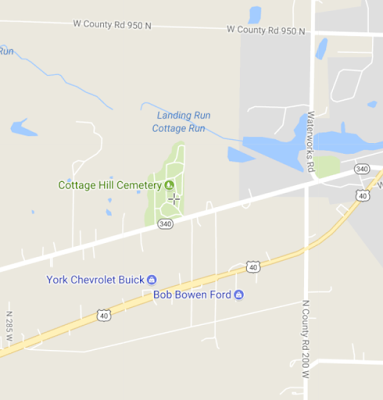Have you ever come across a place name in your research you aren't sure still exists? What about a post office name given in a census that isn't the main town? A town in a country you know little about? Looking for cemeteries near your ancestral home? The Geographic Names Information System (GNIS) and NGA GEOnet Names Server (GNS) can help with each of these.
"The U.S. Board on Geographic Names is a Federal body created in 1890 and established in its present form by Public Law in 1947 to maintain uniform geographic name usage throughout the Federal Government." They have links to two main databases, one for domestic names, Geographic Names Information System (GNIS), and another for foreign names, NGA GEOnet Names Server (GNS). Both databases also include historical places which no longer exist.
After going to their homepage, select "Search Domestic Names" to search for places within the United States. Search parameters include feature name, state, county, and feature class. You can enter as much or as little data depending on your goal. You can enter a feature name alone or narrow it by state and county. If you want to have a list of the cemeteries in a specific county, select the feature class as cemetery and specify the state and county.
Below are the results for cemeteries in Benton county, Washington. In contrast, a search of cemeteries in Clay County, Indiana had fifty-seven results.
Clicking on one of the entries will bring up essentially the same data as the table, but on the right side of the screen there is box titled "Mapping Services". I have had the most success with ESRI Map or ACME Mapper, but you can look through all the options to find which one you like best.
This first image is from ESRI Map, looking at the location of Cottage Hill Cemetery, Clay county, Indiana. Both ESRI and ACME have similar options for map styles. ACME's map gives you the ability to mark several locations, which is useful to compare different locations, but it also has an advertisement in the bottom corner of the map.
 |
| "Map" view using ESRI |
 |
| "Map" view using ACME |
 |
| "Topo" view using either |
Notice how each map view provides different information and perspectives, so look through all the different map styles for your location. I have found the topographical maps to provide interesting information about an area, though keep in mind these do not necessarily depict the area as it would have been when your ancestor lived there. In this map I can see abandoned train lines, mines, water features, buildings, schools, cemeteries, and much more.
If you are interested in finding a place outside of the United States, select the "Search Foreign Names" option back on the main page or go directly to the NGA GEOnet Names Server (GNS) text based search page.
You can then select the country (or not if you don't know which country to select) and then enter your place name in the "Name:" field. For this example I am searching for "Vysocina." I believe it is in Bohemia or Czech Republic, but since I am not sure what country it is in I did not select a country.
I now have a list of four places, all within the Czech Republic (Czechia), that have "Vysocina" as the official place name or as a variant name. The map options for Foreign Names is not as useful as the one for Domestic Names. The only options here are for the latitude and longitude of the place in Google Maps or Mapquest. This can be problematic if the name is for a region because often that boundary does not show up in the supported mapping programs, but at least it gives an idea of what part of the country that place exists.
The Foreign Names database may not have as many features as the the Domestic Names database, or even a general search engine, but it might come in useful if you are having difficultly locating a certain place and you aren't having luck elsewhere. Also, it is useful to know if several areas within a country had at least a portion of the same name, as seen above, so you don't assume that the first place that comes up in search engine results is the only place by that name.
Knowing the places our ancestors lived is so vital to finding their records and these databases are a couple more tools that can help us better understand the places we need to know more about while doing our research.




No comments:
Post a Comment